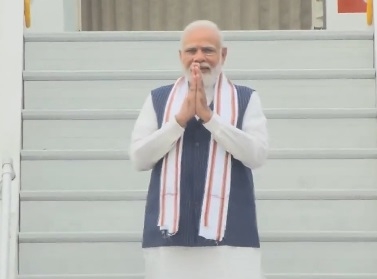New Delhi, June 20 (IANS) Ahead of a substantive state visit of Prime Minister Narendra Modi to the US, former UN Environment Programme executive director Erik Solheim on Tuesday said he was thrilled to witness the historic visit.
"The strong bond between India and the US serves as a cornerstone for global partnerships, fostering economic growth, innovation, and cultural exchanges," tweeted Solheim, who previously said the West has a lot to learn from economic policies and green commitment of Modi, who systematically uses the state as an economic tool, much like South Korea did with thundering success a few decades ago.
On Tuesday, Modi left for the US where he will attend programmes in New York City and Washington DC. The programmes include Yoga Day celebrations at the UN headquarters, talks with President Joe Biden, address to the Joint Session of the US Congress and more, says the Prime Minister's Office.
Ahead of Modi's state visit to the US, the UN dedicated a solidarity tree honouring the victims of Mumbai terror attack.
Since coming to power in 2014, Modi has visited the US on multiple occasions to deepen bilateral ties.
Previously Solheim, in a full-page op-ed, titled 'Why India is the nation to follow in 2023', published in Dagens Naeringsliv, a Norwegian newspaper specialising in business news in March, explains why Modi is the most popular politician in his own country. And how western media is failing by giving a negative view of India and Modi.
Solheim, who from 2007 to 2012 held the combined portfolio of Norway's Minister of the Environment and International Development and from 2005 to 2007 served as Minister of International Development, believes Modi's popularity is due to the fact that he both creates and shares.
"A digital economy where the poor for the first time have real bank access through their cell phones making direct cash transfers possible. The amounts are not big, but if you are very poor, a few hundred or thousand rupees means a lot. All hands went up when I visited Bhargawan village in Madhya Pradesh and asked if the tribal villagers had benefitted from the prime minister's direct cash transfer scheme."
He said European political leaders can learn a lot from how Modi composes an appealing national story that workers, farmers, all those who do not feel they have received enough respect from the elite, feel at home.
Explaining why India is the country to follow in 2023, the former Norwegian diplomat and politician, who played a crucial role in convincing India to phase out single-use plastics, said the progress is impressive.
According to Solheim, India is expected to compete with the US to be the world's second largest economy in 2050.
"We would do well to look to India in the years ahead," he added.












